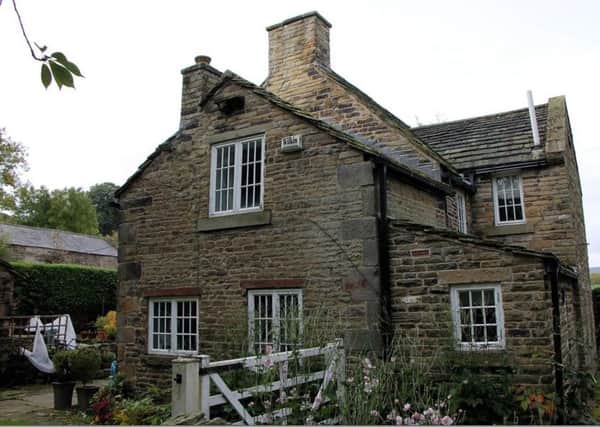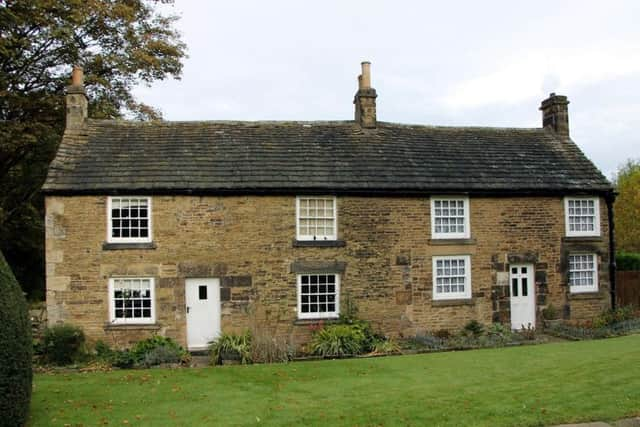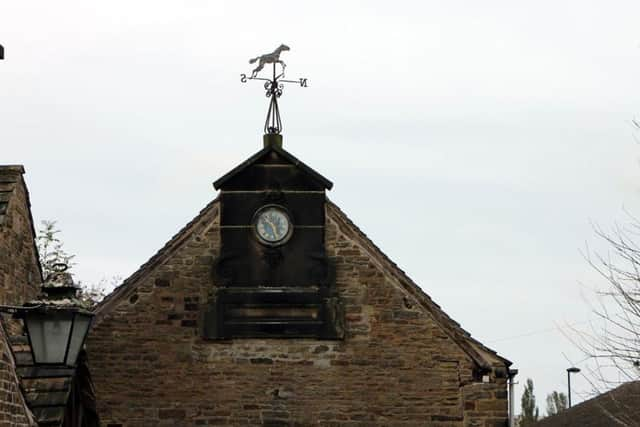'˜Meddlesome priest' killing and its links to Sheffield


The clue picture is one of the few remnants of what was Beauchief Abbey.
It was high up on the Abbey doing its job as a gargoyle to throw rainwater away from the walls and it now sits looking out on passers-by on the gable end of Beauchief Abbey Farm, which goes back to the 16th century, a beautiful untouched building.
Advertisement
Hide AdAdvertisement
Hide AdThe Abbey was built by Robert Fitz-Ranulf de Alfreton, who was born in Belper in 1148 and died in Nottinghamshire in 1185, as an atonement for his part in the murder of Thomas Becket brought on by King Henry II.


After several arguments and disagreements with Becket, the King was supposed to have uttered these fateful words, “What sluggards, what cowards have I brought up in my court, who care nothing for their allegiance to their lord. Who will rid me of this meddlesome priest?”
Four knights, Reginald FitzUrse, William de Tracey, Hugh de Morville and Richard le Breton, took the King at his word and murdered Becket in Canterbury Cathedral on December 29, 1170.
It seems that Robert Fitz-Ranulf was involved in the murder but didn’t strike any blows at Becket.
Advertisement
Hide AdAdvertisement
Hide AdThe abbey was founded by Robert Fitz-Ranulf de Alfreton in 1183, placing foundation before that date.


The abbey was dedicated to Saint Mary and Saint Thomas Becket, who had been canonised in 1172. It is stated that Robert Fitz-Ranulf was one of the murderers of Thomas Becket and founded the abbey, such was his guilt.
Edward Pegge disputed this fact, showing that Robert Fitz-Ranulf had no connection with the murder.
Beauchief was a small house comprising around 12 to 15 canons plus lay brothers.
Advertisement
Hide AdAdvertisement
Hide AdIt had the full range of monastic buildings including the abbey church, cloisters, chapter house, dormitory and refectory.


A stream provided water to the Abbey and to fish ponds.
As with most monastic sites, Beauchief was an industrial as well as a religious centre.
Farming on the Beauchief estate and on outlying manors was important and the monastery also controlled iron smelting, mineral extraction, woodland industries and mills on the River Sheaf.
The Abbey was dissolved in 1537 and the estate became the property of Sir Nicholas Strelley, from whom it descended to the Pegge family through the marriage of Edward Pegge of Ashbourne, Derbyshire to Gertrude Strelley, heiress of the Strelleys, in Norton on 17 July 1648.


Advertisement
Hide AdAdvertisement
Hide AdIn 1671 Edward Pegge built Beauchief Hall using stone from the now ruined Abbey.
In 1923, the estate was purchased by Mr Frank Crawshaw.
Today only the western tower of the Abbey remains, attached to a chapel.
This is now used as a church, built in the 17th century, but what remains is a Scheduled Ancient Monument.
The foundations of other buildings are visible and the medieval fishponds still exist.
Advertisement
Hide AdAdvertisement
Hide AdMuch of the old estate is now occupied by two golf courses but several areas of ancient woodland remain: Parkbank Wood to the East of the Abbey, Old Park Wood and Little Wood Bank to the south, Gulley’s Wood in the centre of the park and Ladies Spring Wood to the west.
Public footpaths run through the estate, including across the golf courses and through several of the woods.
Beauchief Abbey House is a group of houses on Beauchief Abbey Lane.
It is situated at the bottom of the lane in view of the abbey.
Advertisement
Hide AdAdvertisement
Hide AdThe barn adjacent to Beauchief Abbey House has been identified as dating from the early 16th century and a modern house in limestone and steel has been built next to the main house.
Archaeological work has been carried out in the grounds of house but not yet been published.
Beauchief Abbey Farm is a Grade II Listed building, it has four bedrooms and is a detached farm house.
Part of the farm house – One Man’s Cottage – was built in the 16th century as part of the Abbey buildings and was extended later, using stone from the nearby Beauchief Abbey, one of Sheffield’s iconic landmarks.
Advertisement
Hide AdAdvertisement
Hide AdIt has many historical and unusual features including a gargoyle from the Abbey, my clue picture, and a fragment of medieval dry fresco in the kitchen.
During my visit, I did find what looked like remnants of the Abbey just scattered at the rear of the building – why I’ll never know.
There’s what seem to be barns that have been added to and rebuilt throughout the centuries.
These now seem to be used as storage for the golf course paraphernalia, mowers, hand tools etc.
Advertisement
Hide AdAdvertisement
Hide AdThese buildings are in dire need of some kind of restoration otherwise they will be lost.
Who would have thought that Sheffield had such a historic connection to the murder of St Thomas Becket but it’s largely ignored?